MEWS NEWS

SPRING 2024
Antoine Lurot
1940-2023
THE FIRST WORD IN MEWS
04
06 PLUS ÇA CHANGE by Zoe Dare Hall - Award Winning Property Journalist
10 PRIME MARKET SNAPSHOT
Prime property sales - London in a transformative phase by Billy Harvey
11
PRIME MARKET SNAPSHOT
London’s rental landscape for landlords by Mollie Swallow
12
EVERCHANGING MEWS
How the mews interiors evolved over time by Martyn John Brown
18 LB LOVES... PAVILION ROAD
Our tried & tested recommendations
23
33
03
WELCOME TO MEWS NEWS
PROPERTIES FOR SALE
PROPERTIES TO LET
CONTENTS SPRING 2024
WELCOME TO THE SPRING EDITION OF MEWS NEWS
by Mollie Swallow, Director & Head of Lettings

By the time this spring edition of Mews News is delivered to your home, we will be heading towards some important events in 2024. The Spring budget on the 6th March is attracting much speculation with rumours that Inheritance Tax (IHT) may be abolished as a Sunak sweetener ahead of the General Election. Income tax bands may be increased for the first time since April 2022, and the Chancellor could lower income tax rates building on the reduction of National Insurance contributions in the last Autumn budget. The general consensus is that any steps to boost economic growth, including raising the VAT threshold would be welcomed. All this ahead of local elections in early May and a yet to be confirmed date for the General Election.
Meanwhile, with interest rates and inflation appearing to have peaked, the property market across Prime Central London is robust. The private rental sector is watching and waiting on some crucial legislation and regulatory changes this year with the Leasehold and Freehold Reform Bill moving through the legislative process in the House of Commons, the Renters Reform Bill at the Committee stage, and the Law Commission in pre-consultation over the Landlord and Tenant Act 1954; all of these will have far-reaching consequences for the residential and mixed-use sector.
04
020 7479 1996


But back to this edition of Mews News in which we include an article on the evolution of the mews interior through the decades by Martyn John Brown of Everchanging Mews. We have introduced a market snapshot and our LB Loves takes us on a tour of Pavilion Road and some of our favourite go-to places. Our resident property journalist, Zoe Dare Hall has written a special piece, which leads to a moment of true reflection - Lurot Brand’s charismatic founder and Chairman, Antoine Lurot, who sadly passed away in December 2023.
Many of you will have known and met Antoine, a force of nature, a passionate lover of life, who grabbed it with both hands and lived it at 100 miles an hour. It was Antoine’s energy and devilish spirit that made him take a gamble setting up a specialist estate agency back in 1971, documenting 800 mews properties and realising that this was an untapped market in central London. Without Antoine there would be no Lurot Brand, and without Lurot Brand, London would be an empty property nest. Thank you Antoine; you put mews on the map and made them home for so many people.
Edited by Amanda Sharpe
05
Mollie
Swallow Director - Head of Lettings mollie@lurotbrand.co.uk
PLUS ÇA CHANGE
It’s a watershed moment for Lurot Brand – and for the country, politically, in coming months. But mews properties bring the calm we need, says Zoe Dare Hall


He realised the great untapped value that lay in these old stables
More than half a century ago, in 1971, Antoine Lurot spotted an opportunity that had passed others by. A big fan of rally driving, he noticed that many of the mews properties that sat in the small cobbled streets behind central London’s most sought-after addresses were used to house cars. He realised the great untapped value that lay in these old stables – and so Lurot Brand, mews house specialist, was born.
Antoine’s sad passing at the age of 83 in December 2023 marks a watershed not just for the company he grew so successfully over 50 years but for prime London’s mews market - a desirable, colourful and sometimes quirky niche for which he was its most charismatic advocate.
Stepping into the fold, however, and bringing both the Lurot name and a wealth of experience as a director of Lurot Brand since its inception is Kati Lurot, Antoine’s former wife. Kati has helped steer the company over the decades, including as its former head of
sales. As its majority shareholder, she now takes the driving seat to help preserve and build on Lurot Brand’s enduring legacy.
“It’s very early days. I’ll see where the strengths and weaknesses lie so I can help the company to move forward,” comments Kati, who has lived among the small cluster of mews houses in Clarendon Close in Bayswater for 25 years. “I love everything about mews. Being able to pull up outside my front door and being 50 yards from Hyde Park makes for easy living,” she says.
Besides knowing first-hand the benefits of the mews lifestyle, she also understands the anomalies of this market. Her mews house is attached to one in Clarendon Mews, she explains, “but while I have planning permission to add an extra floor, you can’t get permission for love nor money in the neighbouring street”.
A reassuring sense of timelessness is a huge part of the appeal of mews living, but some things have changed beyond recognition, says Kati. “Prices have rocketed, of course.
07
Kati comments that the general election later this year may cause some jitters in the property market. But Billy Harvey, Lurot Brand’s Head of Sales, is optimistic after a strong start to the year. In January, five properties went under offer, ranging from unmodernised mews for around £1m to large, ready-to-move-in mews costing up to £4m.
“An election year sharpens people’s minds. People like to know what taxation environment they are buying in, so better to do it now than wait. But the pique in interest is mainly driven by interest rates going in the right direction now,” says Harvey.
The prime London market is unlikely to see significant growth in 2024 – at best 1%, according to forecasters. “Calm growth,” as Harvey calls it, “but the next five years should see a return to pre-Covid money being invested in property. We go through lulls and difficult times, but London property remains attractive. Investment buyers are coming back, despite the political storm.”
The increasing pressure on City workers to return to the office – for fear that ‘out of sight, out of mind’ may mean out of a job - is also partly fuelling demand for pied-à-terre properties. “Other buyers are thinking about their children’s future. One couple with young children is buying now so they can rent it out until their children come to London for university. That’s a buyer who wouldn’t have bought last year,” says Harvey.
The lettings market, meanwhile, is seeing demand from empty-nesters who live in the country “and are looking to have fun again,” reports Mollie Swallow, Lurot Brand’s Head of Lettings. “Others are in their late 20’s to mid 30’s and don’t yet have kids. They move elsewhere when they start a family, and return later on. It comes full circle.”
London property remains attractive

08

Interestingly, though, while the top end of the lettings market (£3,000+ a week) and lettings below £1,000 a week are strong, the middle tranche of around £1,000 to £2,500 a week is “struggling” says Swallow. “People found really good post-Covid deals and they have built up great relationships with their landlords during that time. They want stability so they are staying put,” she explains. “Our average tenancy is seven years and the majority of deals recently have been for three-year tenancies.”
Landlords need to ensure their property is up to scratch, however. “If you don’t have a fairly new kitchen and bathroom, it won’t shift,” says Swallow. They may also need to accommodate some specific requests from tenants, such as putting up a stud wall or repainting the outside of the property. “Sometimes it’s worth it for the landlord, given the rent they are receiving. It also shows commitment on the tenant’s part,” Swallow comments.
Whether it’s for rent or sale, presenting an accurately priced, well-renovated mews property is largely preaching to the converted. But just occasionally you come across the uninitiated. Kati Lurot recalls one encounter years ago, when a “senior gentleman” arrived for a viewing with his young secretary. “On seeing the word ‘mews’ on the branded car I was driving,” says Lurot, “she asked me: ‘Ooh, are you a cat lover?’”
BY ZOE DARE HALL
Property Freelance Journalist of the Year 2021, International Property Journalist of the Year 2021, Lifestyle & Interiors Journalist of the Year 2021 (Property Press Awards)
09
Prime Market Snapshot
PRIME PROPERTY SALESLONDON IN A TRANSFORMATIVE PHASE

Entering 2024, there is a feeling that London’s prime market has readjusted and is resilient after economic hurdles, Brexit and Coronavirus. The fact that PCL prices only went down by 0.9% in 2023 is testimony to this, based on a high level (70%) of outright homeowners unaffected by successive rises in interest rates.
Overall, right now across the Prime Central London property market there’s a mood of stability and adaptability. Calm and realism prevail and there is a good mix of domestic buyer and overseas demand, together with a strategic shift in buyers preferences to mark the start of Q1.
Billy Harvey, Head of Sales reports:
“ Cautious optimism best defines the current sentiment amongst buyers in the PCL market. This year, we predict that in the medium to long term, stability will underpin 2024.
The heat around a spike in interest rates is cooling, a weakening pound is making buyers feel more confident and decisive. Talk of a looming general election either later in 2024 or early in 2025, will, in our opinion, make little difference to buyers’ intent or behaviour. Prices are forecast to remain stable, potentially with slight growth in Q4 of this year. At present, as property prices are still some way off their historic high, London continues to retain its international status as a harbour in the storm despite a higher taxation environment.
As always, whatever factors are driving the central London market, it’s crucial to choose a specialist agent with a proven track record and in-depth understanding of the local market for your property. They should be able to give you a detailed breakdown of off-market transactions, postcode and street variation in value drawing on historic data and first-hand sales experience. A proactive agent with their finger consistently ‘on the pulse’ will benefit you greatly when it comes to your sale.”
To talk with Billy call 07880 746 677 or contact our office 020 7479 1912.
Billy Harvey Head of Sales
billy@lurotbrand.co.uk

10
Q1
LONDON’S RENTAL LANDSCAPE FOR LANDLORDS
In PCL rental growth has been driven by an imbalance between limited supply of new rental properties coming to the market and a growing population of renters. Property forecasts indicate that rents will increase at a far slower pace of 2% compared with the first half of 2023 when average increases stood at around a whopping 17%. Overall, landlords should be realistic and expect a more balanced rental marketplace.
Legislation is one of the biggest changes for the rental market and 2024 is a critical year for some major changes. Above all else, letting agents and landlords want clarity, so that they can plan for the future and agents can provide the right guidance.
Mollie Swallow MARLA, Head of Lettings, Director reports:
“ While rents are forecast to continue to steadily rise, we are past peak growth, with evidence indicating a that tenant demand will drop due to a weakening of affordability. Although slowing, annual rental growth is forecast to average 3.6% over the next five years. London will lead the slowdown with rents predicted to rise by just 2% this year. However, regulation and higher mortgage rates will continue to impact new investment in the rental market, maintaining the supply demand imbalance which has fuelled growth.
As for the Renters Reform Bill, whilst this is probably the biggest piece of legislation to impact the rental market since the introduction of the Assured Shorthold Tenancy (AST) in 1988, we are still slightly in the dark regarding the changes government will be making. However, the earliest date that we expect this to come into force is
towards the end of 2024 without taking into account the general election changing timeframes.
The rental sector is filled with legislation and compliance requirements that we as agents and our clients need to keep up with, therefore the sooner we understand the final contents of the Bill, the better we can prepare and advise our landlord clients.
What we do understand is that it’s likely Energy Performance Certificate requirements in some form will re-appear in the near future, so landlords with lower EPC rated homes should continue to be aware and review improvements they should undertake. However, with the deadline scrapped and all focus now on the Renters’ Reform Bill, it may be that while attention turns to the changes this Bill brings in, landlords hold off implementing eco improvements until the government clarifies the contents of the new Reform Bill.”
To talk about your rental investment with Mollie call 07919 046 223 or 020 7479 1996.
Mollie Swallow
Director - Head of Lettings mollie@lurotbrand.co.uk

11
EVERCHANGING MEWSHOW THE MEWS INTERIORS
EVOLVED
OVER TIME
Specialist mews consultant Martyn John Brown from Everchanging Mews takes us on a guided tour through the decades of mews interior design, taste and style.
Mews have always centred on a small-scale world in their usage and interiors, reflecting changes within the larger world beyond.



The modern history of the mews started during the Georgian period and lasted for around 100 years. In the beginning, mews had utilitarian interiors, designed for housing horses or other commercial purposes. From their original equine, mews buildings were then used to accommodate motor cars, either in the form of private or commercial garages, as well as providing staff accommodation.
This trend was not long-lived and after about 1908, mews were used predominantly as residential housing. During the 1930’s this gathered pace, particularly after the wars. By the 1970’s, mews homes has become much desired, especially by the artistic and bohemian community. This trend has gained momentum and the cachet around living (and working) in a mews property has become established across prime central residential London.
At the end of the 1960’s, there was a radical change in property ownership when a sustained period of housebuilding resulted in the number of owner-occupiers exceeding the number of renters for the first time.
At the end of the First World War, Britain was a nation where around 80% of the population rented their homes; boom and bust cycles in house prices were yet to come. Between 1950 and the early 1980’s, home ownership steadily increased, and the renting sector decreased. Mrs Thatcher encouraged this trend in the 1980’s by
Ground floor
First floor
Holland Park Mews
12
Typical authentic mews interior providing accommodation for horses and carriage on the ground floor and accommodation above
selling off council homes, primarily to their tenants. The stock of social housing has consistently fallen since the early 1980’s.
The lack of supply created a new demand for property resulting in rising property prices. Initially, prices rose steadily, and after the millennium, there was a particularly dramatic spike, with properties more than doubling in price in the aftermath of 2007’s recession.
The 1960’s were not as frivolous as the nickname ‘swinging sixties’ suggests. It was a decade of change for society - revolution, the civil rights movement, a counterculture, political events, music and the arts. Alongside this, came a strong sense from people wanting to reclaim the mews and enjoy living in these parts of central London, rather than commuting from the outskirts and suburbs.
During this period, people began to rethink the habit of separate places to live and work, after 50 years of using transport in a certain way, this started to shift.
INTERIORS IN THE 1960’S
After WWI, the influential modernist movement, sought to reject the excessive ornamentation of the past. Architects and designers like Le Corbusier and Ernö Goldfinger opted for new ideas and cuttingedge technology to improve the quality of life. The emphasis was on clean lines, light and space simplicity and practicality; using new materials inspired by the ‘space-race’ like formica for kitchen worktops, and aluminium trim and bold coloured plastic accessories, were introduced into the home. Carpets, fabrics and wallpapers adopted abstract designs, using geometric shapes, stepped forms and chevron patterns. Features such as sunken living room conversation-pits were in vogue and people chose to relax surrounded by wood cladding and cabinetry.
By the 1970’s, London’s mews were still very unostentatious. Most were still awaiting modernisation, and many retained the old equine proportions with large drafty stables, coach houses below, and cramped flats above.


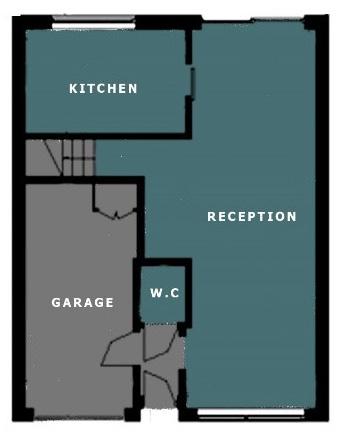
13
By the turn of the last century motor vehicles had replaced horses
Typical 1960’s Mews Interior
Ground Floor
First floor
INTERIORS IN THE 1970’S
In 1970, people were familiar with refrigerators, freezers and other appliances. For nearly half a century, kitchens had been equipped with oversized, buzzing boxes to keep food cold, but their capacity was limited compared to new efficient appliances.
Televisions positioned in the corner of each living room only had three channels, which some were lucky enough to watch in colour. Now this seems primitive, but only 30 years before, anyone seeking contemporary information had to rely on cinema newsreels to see broadcasts of Wimbledon, the coronation, or the Olympics.
The 70’s was the era when mews came into their own as residential boltholes. Market forces gave them a greater sense of their value, but they were still not considered as prime coveted dwellings. They required


modernisation and their layout was still compromised - many still having equine proportions with large draughty stables and coach houses below with cramped flats above.
At this time, mews living was becoming open plan with reception rooms on the ground floor and bedrooms on the upper level. Before the advent of conservation areas, they were often colourfully painted outside and traditional materials such as timber windows were replaced by aluminium replacement items. Internal fabrics included velvet and timber cladding, cabinetry was now elm, rather than traditional oak, cherry and walnut.
Notable changes indeed but still some distance away from multiple en-suites, multimedia rooms, gyms and state-ofthe-art basements, or broadband.
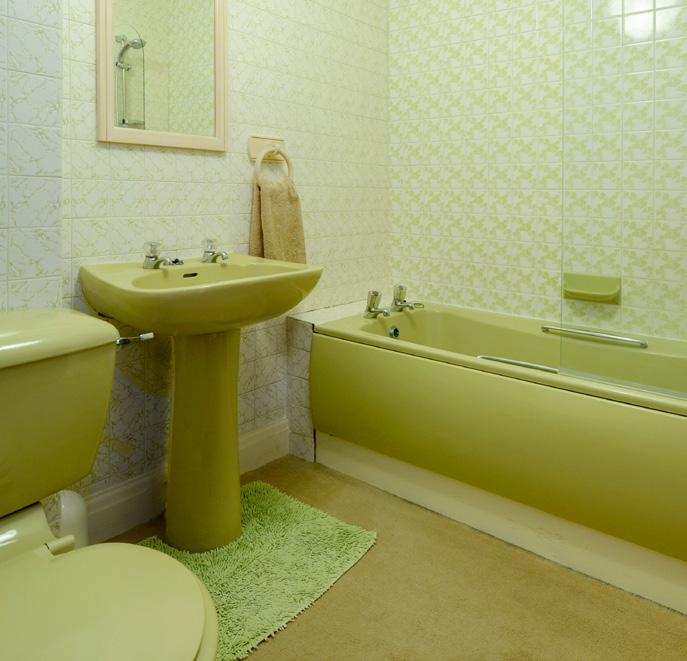
FURTHER ADVICE ABOUT LONDON MEWS
This article was written by Martyn John Brown MRICS, MCIOB, MNAEA, MARLA, MISVA of Everchanging Mews Limited www.everchangingmews.com who is a specialist Mews Consultant.
Everchanging Mews Limited is owned and run by Martyn John Brown MRICS, MCIOB, MNAEA, MARLA, MISVA who provides professional surveying advice – for Surveys, Valuations and Party Wall matters contact info@everchangingmews.com or call Martyn on 0207 419 5033
14
INTERIORS IN THE 1980’S
Peoples’ interest in the mews grew by 1980 and more people began to speculate in ever-increasing numbers, which meant the supply of dilapidated mews in rundown street reduced rapidly.
This is becoming all too common these days, especially in mews streets.
The1980’s was a ‘boom-time’ for mews when covetous eyes started to focus on the potential of these properties. They began to undertake more ambitious conversions with the advent of new technology and an emphasis on glossy appearance, driven partly by the popularity of American serials such as Dallas and Dynasty.
Postmodernism was the architectural creed that evolved in response to the uniformity and lack of ornamentation presented by the modernists. It was all about bright
INTERIORS IN THE 1990’S
During this decade, people started to regard mews living in a more versatile way and were egged on by the proven capital appreciation – now investing in mews bricks and mortar and maximising the potential became a serious proposition.
Initially, this interest came with a desire to build upwards and in a number of different ways, subject to planning approval. Planners were generally accommodating, although each planning department had its own perspective on how mews roofs should look.
Consequently, the relationship of inside to outside space was not consistent and this determined the size and type of accommodation that could be created. For example, an extra bedroom with an en-suite would not require any significant balcony or outside space, whereas a reception room would benefit from a generous external space.
Throughout the 1990’s construction dipped generally across the UK before recovering at the end of the decade with a leap in technology and scientific research.

colours, asymmetrical shapes, classical motifs and historical references, and featured veined marble surfaces, mirrored cupboards, colourful carpets and bathroom suites.

Mews residents were not only enjoying living there but, because of the proven capital growth, were looking to invest into extending their homes into the roofs.
15






INTERIORS IN THE 2000’S
By 2000, the number of opportunities for mansard roof extension was dwindling because the trend for development had moved on to digging downwards and creating basement space with gyms and multimedia rooms. It was a prolific trend for about 15 more years until planners began to respond to public and neighbours’ concerns about the disruption this type of excavation caused.
The 2000’s also brought about the third big post-war housing bubble due to rising population, recent economic growth and plenty of cheap credit. Prices rose from 2000 until 2007, then dropped significantly, before rising again in 2012.
Television now competed with computers and the internet and iPads at the end of this decade. This new technology did not take up space and allowed more flexible layouts in mews homes. Colour schemes were much reduced, adopting ‘hospital chic’ which meant everything was white. Concrete floors and floating staircases became a trend. But nothing was as desirable as the basement, bucking the trend for smaller homes by creating lavish amounts of previously unimaginable rooms – gyms, multimedia spaces, laundries, maids’ rooms, wine cellars.
INTERIORS IN THE 2010’S
By 2010, basement development had continued along the previous lines but it often evolved into basement wars… figuratively at least. Initially, there were sufficiently few schemes to ensure that they were carried out by those with the requisite experience of construction. As time went by and the demand for such developments increased, so did the ambition of those undertaking the schemes rise and unfortunately, the know-how of those attracted to these developments did not match the demands.
16
KITCHEN RECEPTION LANDING W.C LANDING RECEPTION GARAGE W.C ENSUITE BEDROOM 1 LANDING BEDROOM 2 BEDROOM 3 ENSUITE LANDING ENSUITE Ground Floor Lower ground Floor First Floor Second Floor
Leinster Mews, W2
Plans for single basements were soon replaced with plans for basements with lower service rooms, which in turn were replaced with plans for double (lower) basements. Such projects stretched the bounds of domestic architecture and became major engineering exercises since the London Aquifer supporting them could not always be relied upon for this type of development. Neighbours were also increasingly up in arms due to the disruption caused.
Planners responded to the objections raised, to make basement applications a much more rigorous process.
The 2010’s will probably be known for advances made in technology and social media - the iPad arrived in 2010, and Alexa four years later.
INTERIORS IN THE 2020’S
The 2020’s started with a worldwide pandemic that appears to be receding.
The future offers up all manner of possibilities for the mews, but they will remain long-term survivors. From cheap, adaptable spaces, they have been altered, converted and imaginatively reworked to make the best of their limitations, much to the enjoyment of many happy residents.
Throughout their everchanging history, the mews have survived until someone intervenes. Presently, they remain hugely desirable places in which to live and work.
We should take heed of the past as it provides us with good examples of how knowledge can be applied to all aspects of our endeavours to achieve our goals. Future opportunities for alterations and improvements will still exist due to the massive capital value increases that accompanied mews developments, which prompts a new approach - enhanced design.
With the involvement of architects and surveyors - especially mews specialiststhere can be a fresh focus on adding value
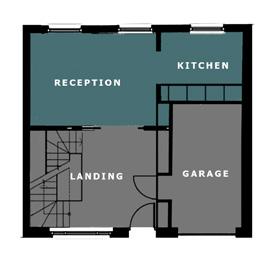





to the properties through quality design, to achieve layouts that flow and enhance contemporary lifestyles and deliver a work life balance including working from home.
The intention is to carefully avoid some of the pitfalls of the past and improve the use of mews properties for the future ensuring the everchanging nature of the mews continues.
17
Double basement floor plans
Ground Floor
Lower basement
First Floor
Second Floor
Upper basement
PAVILION ROAD, CHELSEA SW3

Lying behind Sloane Street and just 300 metres away from Sloane Square’s underground station, at the southern end you will find Pavilion Road - the longest mews in London.
Under the careful stewardship of the Cadogan Estate www.cadogan.co.uk
Pavilion Road’s old Victorian stable buildings have been totally transformed.
Over the past few years, the pedestrianised mews has become a vibrant destination, and a ‘village hub’.
It offers a cornucopia of independent shops, artisan boutiques, five enticing restaurants and wellness amenities.
In the warmer months, coffee drinkers,
people watchers and hungry shoppers can be spotted sitting with friends and family enjoying al fresco refreshment in the attractive cobbled mews.
For local Chelsea residents Pavilion Road is a place always full of life, somewhere to shop, socialise and even work, and attracts visitors from all around London and beyond with its relaxed friendly atmosphere and wonderful choice of special purveyors of fabulous food, fashion, fitness and fun.
www.pavilionroad.co.uk
We’ve come up with some of our most favourite gems in Pavilion Road and thought we’d share…
LB LOVES…
18

1. 2.
ICE CREAM UNION
12 years ago this truly gourmet ice cream maker set up shop in Pavilion Road. They have a reputation not only for fabulous flavours, but for the quality and meticulous way they source and blend ingredients. They supply many of London’s top restaurants, so you know when you visit their shop you’re in for a treat. The good news is the shop is open from 11am until 10pm seven days a week and they do home deliveries. Trust us – one scoop is never enough!
www.icecreamunion.com

LONDON CHEESEMONGERS
Connoisseurs of cheese – this company handpicks only 40 cheeses for their counter at any one time. The selection is based on the flavour, the handmade production and sustainability and varies each season. Customers are encouraged to sample and try before they buy, to lead them on a cheese adventure and showcase the knowledge that this business has. Whether it’s a hunk of traditional farmhouse Cheddar, or their trademark Swiss Gruyere from Vincent Auberson in Vaud, we guarantee you will not leave empty handed. Pass the port someone…
www.londoncheesemongers.co.uk
19

4. 3.
PROVENANCE BUTCHER
Friendly butchers with a passion and a conscience about where they source their meat and their suppliers’ husbandry skills. Tired of chicken, bored of beef? These expert butchers are always happy to guide you about different cuts of meat and give you inspiration to try something new at home in your kitchen. It’s amazing how the better the animal has been looked after, the more amazing the meat tastes. And don’t forget there’s the deli for charcuterie, nibbles, wine, craft beer and saucy sauces.
www.provenancebutcher.com

KXU
After all that meat, cheese and ice cream, you might want to head to the ultra-sleek fitness and wellbeing studios at KXU. Forget the hassle of membership or smallprint contracts, this is a get-fit-as-youplease affair. Whether you’re into U-cycle classes, HIIT, strength training, yoga, or barre exercising, you will find and really enjoy it here. This place is all about you finding your own level of fitness within a friendly active community, and for quiet moments, there’s a state-of-the-art medispa for relaxation and recovery, and a nutrition bar for a post-workout refuel.
www.kxu.co.uk 20

6. 5.
THE SEA THE SEA
We promise there’s nothing fishy about this casual and intimate seafood bar and terrace. The menu changes daily to reflect the catch of the day throughout the different British seasons – from small plates and dishes of cured cod, churuto waffle and lobster terrine, you will be transported to the coast whilst dining in Chelsea. They sell, supply and deliver the freshest of fish and seafood and also offer a wealth of fancy produce and larder staples to accompany your fish dishes –including their own caviar, homemade stocks, sauces and marinades.
www.theseathesea.net

ROASTING PARTY
We have no idea why it takes an Aussie to come to London and make the best coffee around, but seriously this is! They’re a small passionate team of as they say, ‘creative thinkers and coffee drinkers’. Everything is about the roasting process and refining the coffee making process – so whether it’s black or it’s white, it’s always big and bold and never ever bitter. Head here for coffee and chat all day long.
www.roastingparty.co.uk
21

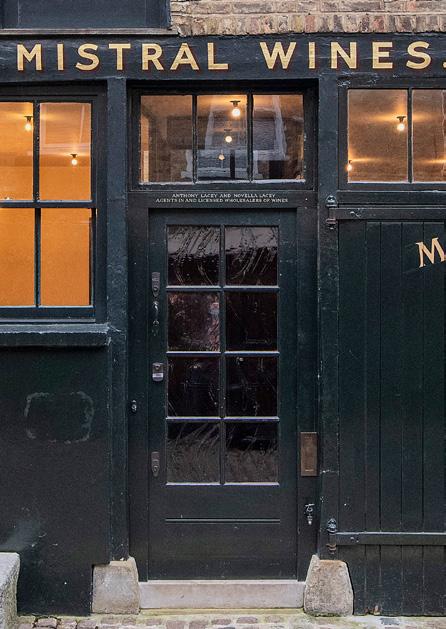
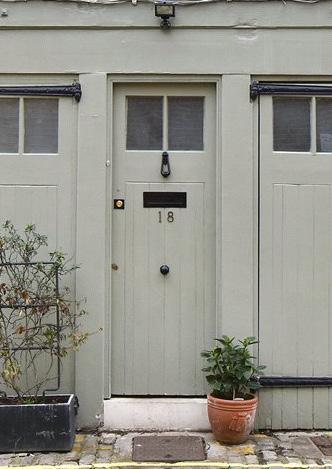

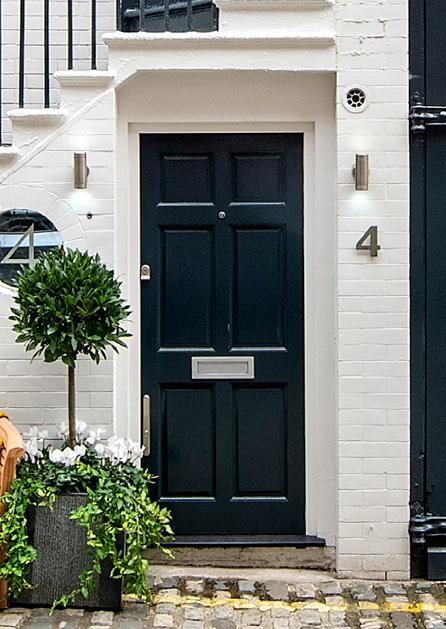


Calling all mews enthusiasts
Over the years we’ve heard many lovely stories about the people living in mews that we would love to share with the mews community.
If you have a mews-related story or event in a mews that you would like to share, then we’d love hear from you.
Get in touch with your mews news
marketing@lurotbrand.co.uk
020 7590 2528



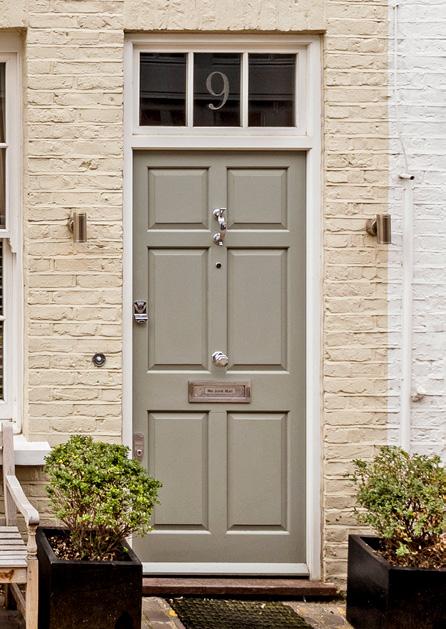





FOR SALE SW1X PONT STREET MEWS £6,000,000 • Freehold • 4 Bedrooms • 1 Reception Room • 3 Bathrooms • Garage • 2,553 sq.ft.
£3,950,000
•
•
•
•
•
•
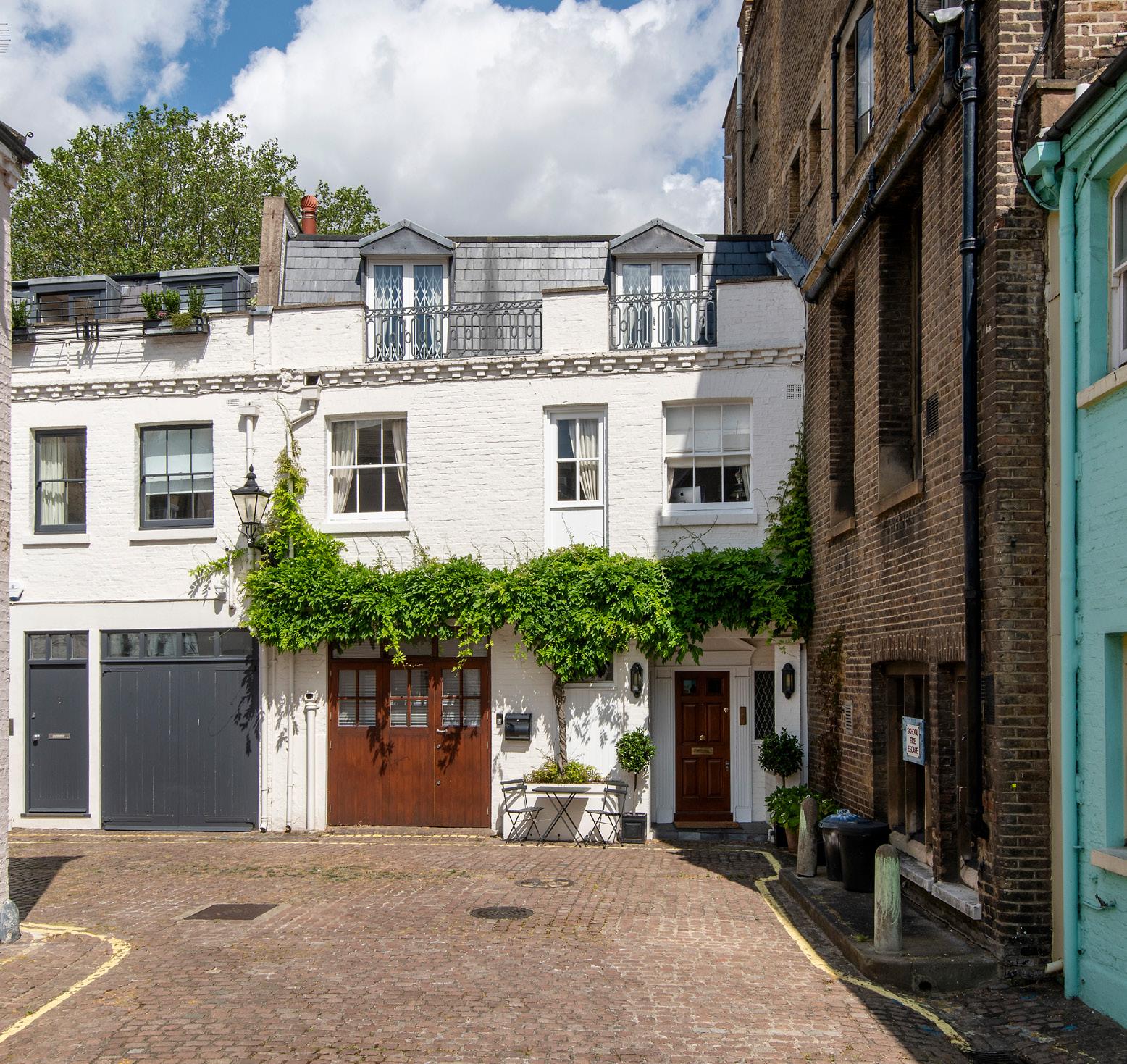



FOR SALE W2
LANCASTER MEWS
Freehold
Bedrooms
3
Reception Rooms
2
Bathrooms
4
Balcony
2,848 sq.ft.




FOR SALE W2 BATHURST MEWS £3,150,000 • Freehold • 4 Bedrooms • 1 Reception Room • 3 Bathrooms • Patio • Roof Terrace • 2,313 sq.ft.
•
•
•
•
•




FOR SALE W2
FREDERICK CLOSE £2,500,000
Freehold
3 Bedrooms
1 Reception Room
2 Bathrooms
Garage
1,329 sq.ft.
•



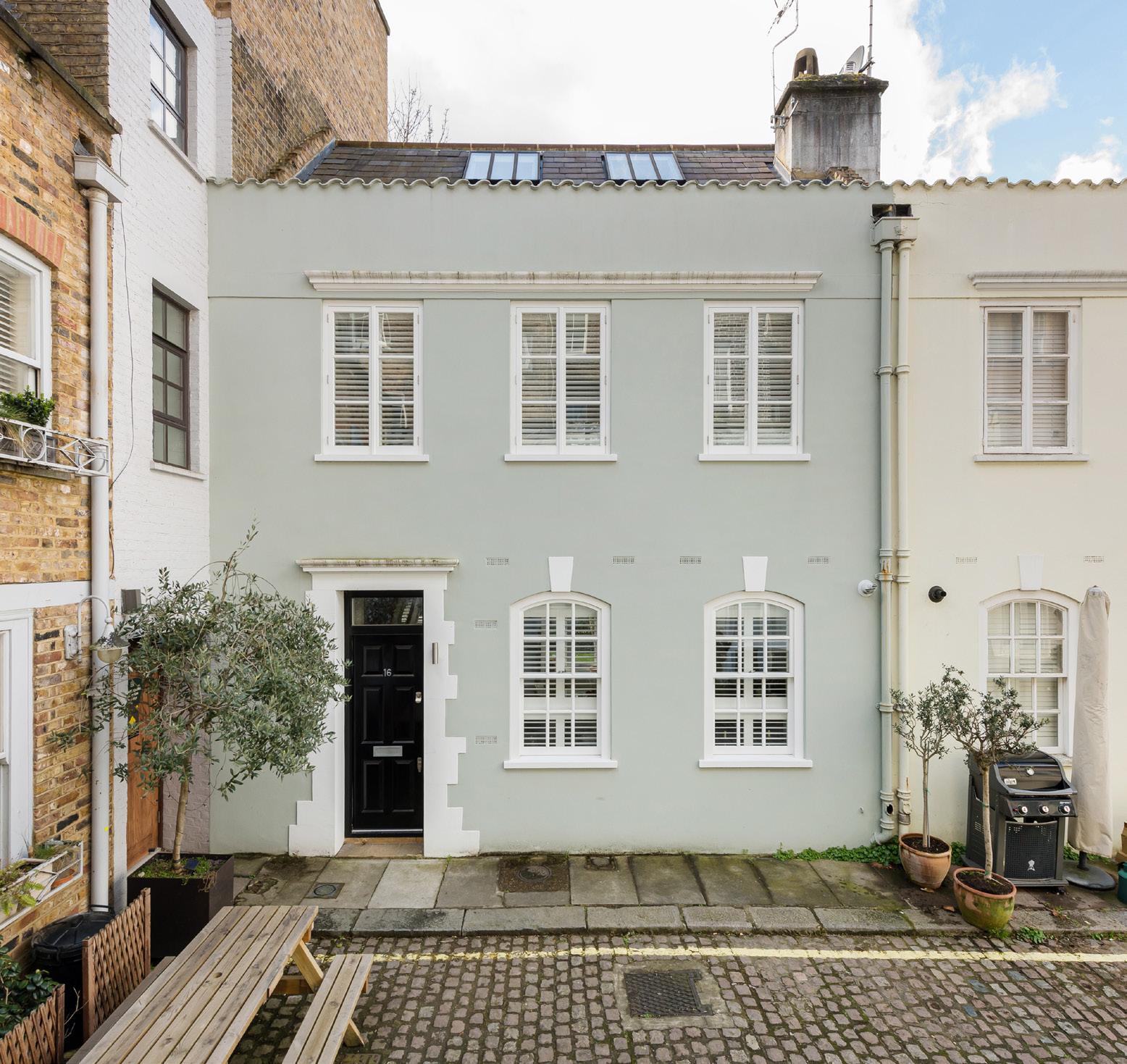
FOR SALE W2 ARCHERY CLOSE £2,400,000 • Freehold • 2 Bedrooms • 1 Reception Room • 2 Bathrooms • 1,158 sq.ft.
SW7 • £1,850,000
KYNANCE MEWS
Freehold • 3 Bedrooms • 1 Reception Room • 2 Bathrooms • 1,141 sq.ft. •







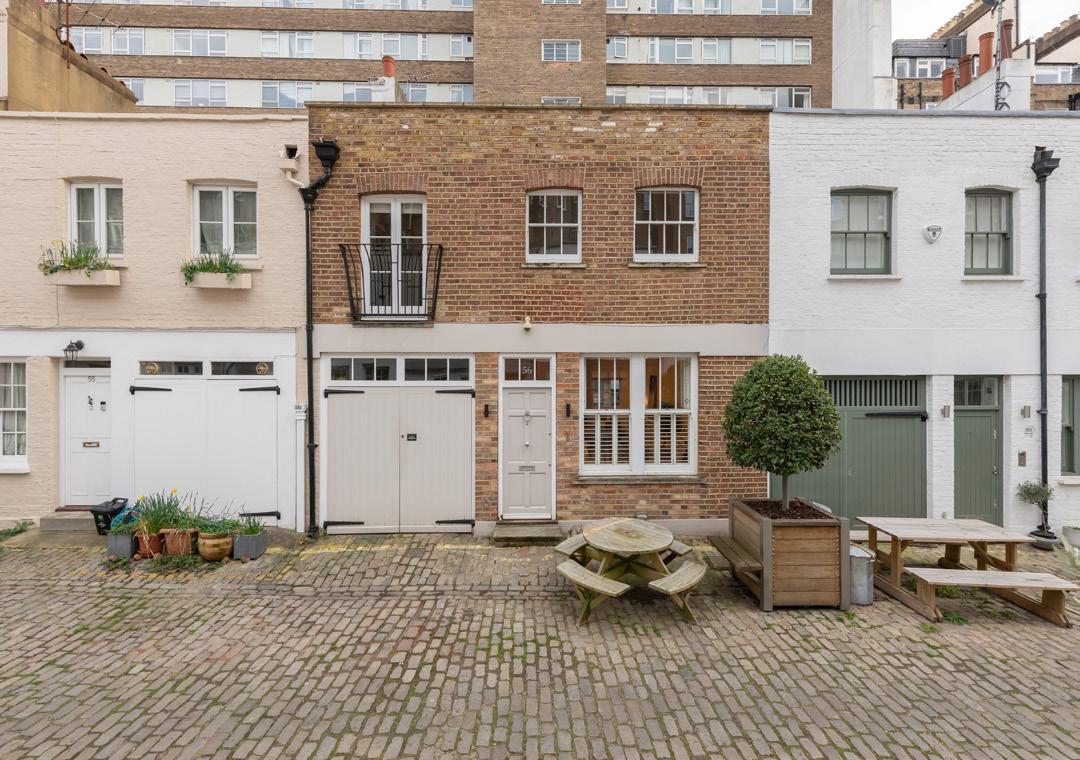
W2 • £1,850,000 BATHURST MEWS
• Freehold • 3 Bedrooms • 1 Reception Room
• Garage • 1,058 sq.ft.
FOR SALE








W9 • £1,550,000 BRISTOL MEWS • Freehold • 3 Bedrooms • 3 Bathrooms • Garage • 1,357 sq.ft. W9 • £1,595,000 ST. PETERS PLACE Freehold • 3 Bedrooms • 2 Reception Rooms • 2 Bathrooms • 1,625 sq.ft. • FOR SALE
SW1X • £6,950,000 HEADFORT PLACE
Freehold • 4 Bedrooms •


SW7 • £4,250,000
CRANLEY MEWS
Freehold • Development Opportunity •
W1G • £4,750,000 WIMPOLE MEWS
• Leasehold 902 years • 3 Bedrooms


W2 • £2,050,000
SOUTHWICK MEWS
• Freehold • 4 Bedrooms
FOR SALE





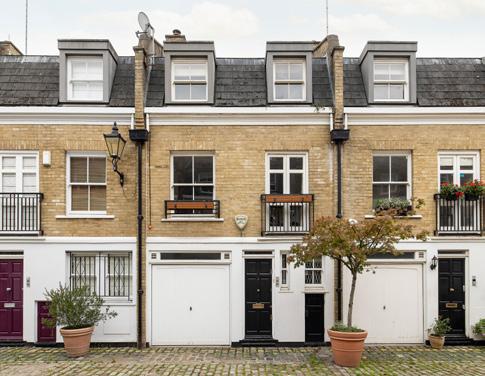



SW7
FOR SALE
OSTEN MEWS £1,300,000 • Freehold • 2 Bedrooms
WEST MEWS £1,100,000 • Share of Freehold 960 years • 2 Bedrooms
LEDBURY MEWS NORTH £565,000 • Leasehold 968 years • Studio, 408 sq.ft.
CLARENDON MEWS £1,500,000 • Freehold • 2 Bedrooms
CLEARWATER TERRACE £1,400,000 • Freehold • 3 Bedrooms
ELNATHAN MEWS £1,350,000 • Freehold • 2 Bedrooms
MANSON MEWS £2,750,000 • Freehold • 5 Bedrooms
GREENS COURT £1,995,000 • Leasehold 115 years • 5 Bedrooms
ADDISON PLACE £1,725,000 • Freehold • 2 Bedrooms
SW1V
W11
W2
W11
W9
SW7
W11
W11
SW7 • £4,200,000 RELTON MEWS
Freehold • 5 Bedrooms •

SW7 • £2,800,000 PRINCES GATE MEWS
• Freehold • 2 Bedrooms

RECENTLY SOLD

SW5 • £2,600,000 SPEAR MEWS
Freehold • 3 Bedrooms •

W2 • £1,900,000 JUNCTION MEWS
• Freehold • 2 Bedrooms
And several others...
SOLD




TO LET SW3 HANS ROAD £3,000 pw • 3 Bedrooms • 1 Reception Room • 3 Bathrooms • Garden • 2,092 sq.ft. • Long Let
•
• 1
• 4
• 1,829
•




TO LET W11
pw
DENBIGH CLOSE £2,300
4 Bedrooms
Reception Room
Bathrooms
sq.ft.
Long Let

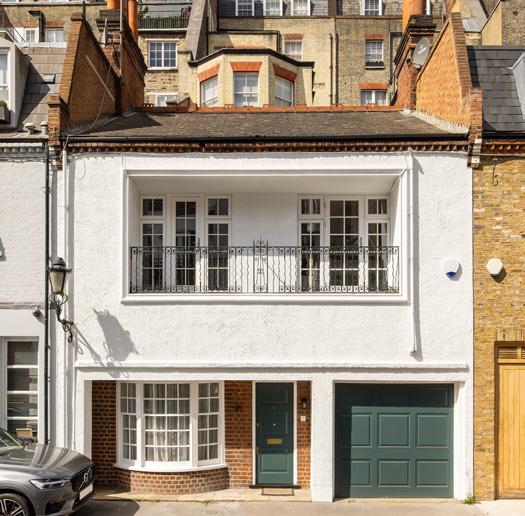


TO LET SW1X PAVILION ROAD £1,950 pw • 3 Bedrooms • 1 Reception Room • 2 Bathrooms • Garage • 1,334 sq.ft. • Long Let
SW5 HESPER MEWS
£1,700
• 3 Bedrooms
• 2 Reception Rooms
• 2 Bathrooms
• Roof Terrace
• 1,808 sq.ft.
• Long Let




TO LET
pw




TO LET SW1W BURTON MEWS £1,650 pw • 2 Bedrooms • 1 Reception Room • 2 Bathrooms • Garden • 1,296 sq.ft. • Long Let
£1,500
• 2
•
• 2
• 1 Office
• Gated
•
• Long Let




TO LET W2
LINDEN MEWS
pw
Bedrooms
1 Reception Room
Bathrooms
1,212 sq.ft.



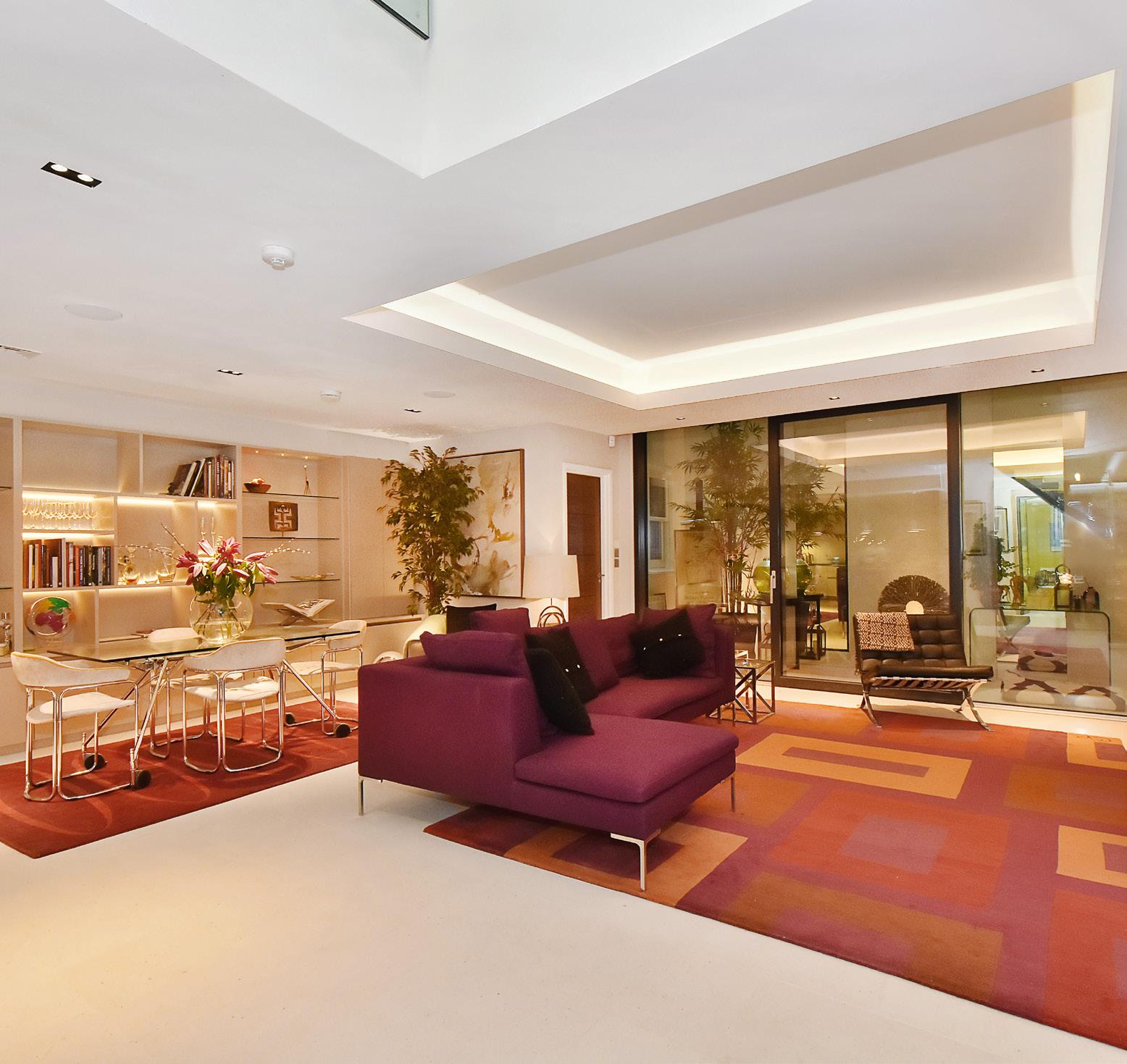
•
•
•
•
•
•
TO LET
ELVASTON MEWS
pw
SW7
£1,300
1 Bedroom
1 Reception Room
1 Office
Patio
1,283 sq.ft.
Long Let
MONTAGU MEWS WEST
£1,195
• 2 Bedrooms
• 1 Reception Room
• 2 Bathrooms
• Garden
• 1,072 sq.ft.
• Long Let

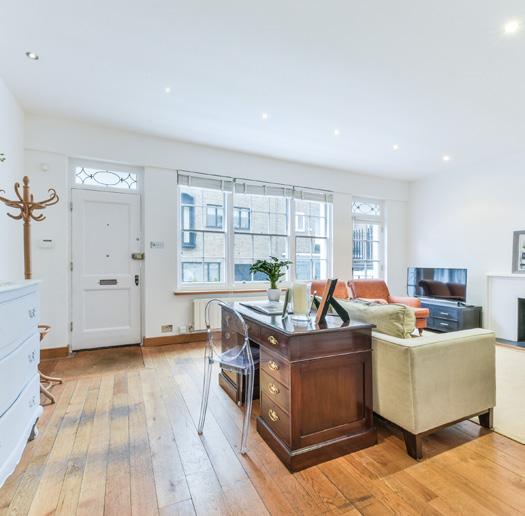

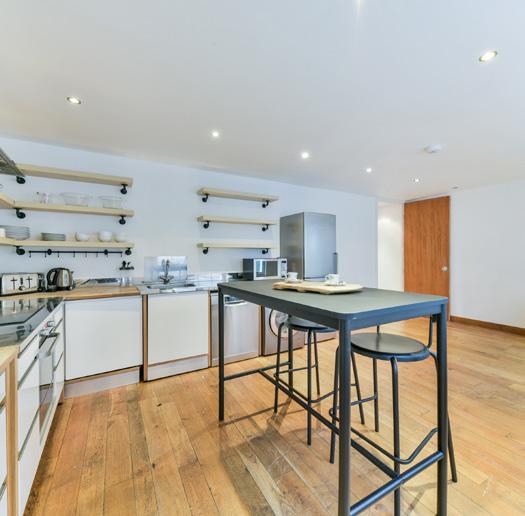
TO LET
W1H
pw




TO LET W2 CONDUIT MEWS £895 pw • 3 Bedrooms • 1 Reception Room • 2 Bathrooms • Garage • 1,224 sq.ft. • Long Let
ST. STEPHENS MEWS
•


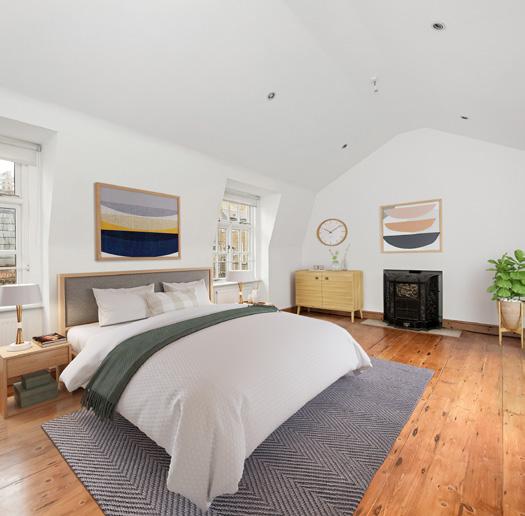

TO LET W2
£825 pw
3 Bedrooms
•
1 Reception Room
2 Bathrooms • Terrace
1,255 sq.ft.
Long Let
•
•
•




TO LET SW1V WEST MEWS £750 pw • 2 Bedrooms • 1 Reception Room • 2 Bathrooms • 932 sq.ft. • Long Let
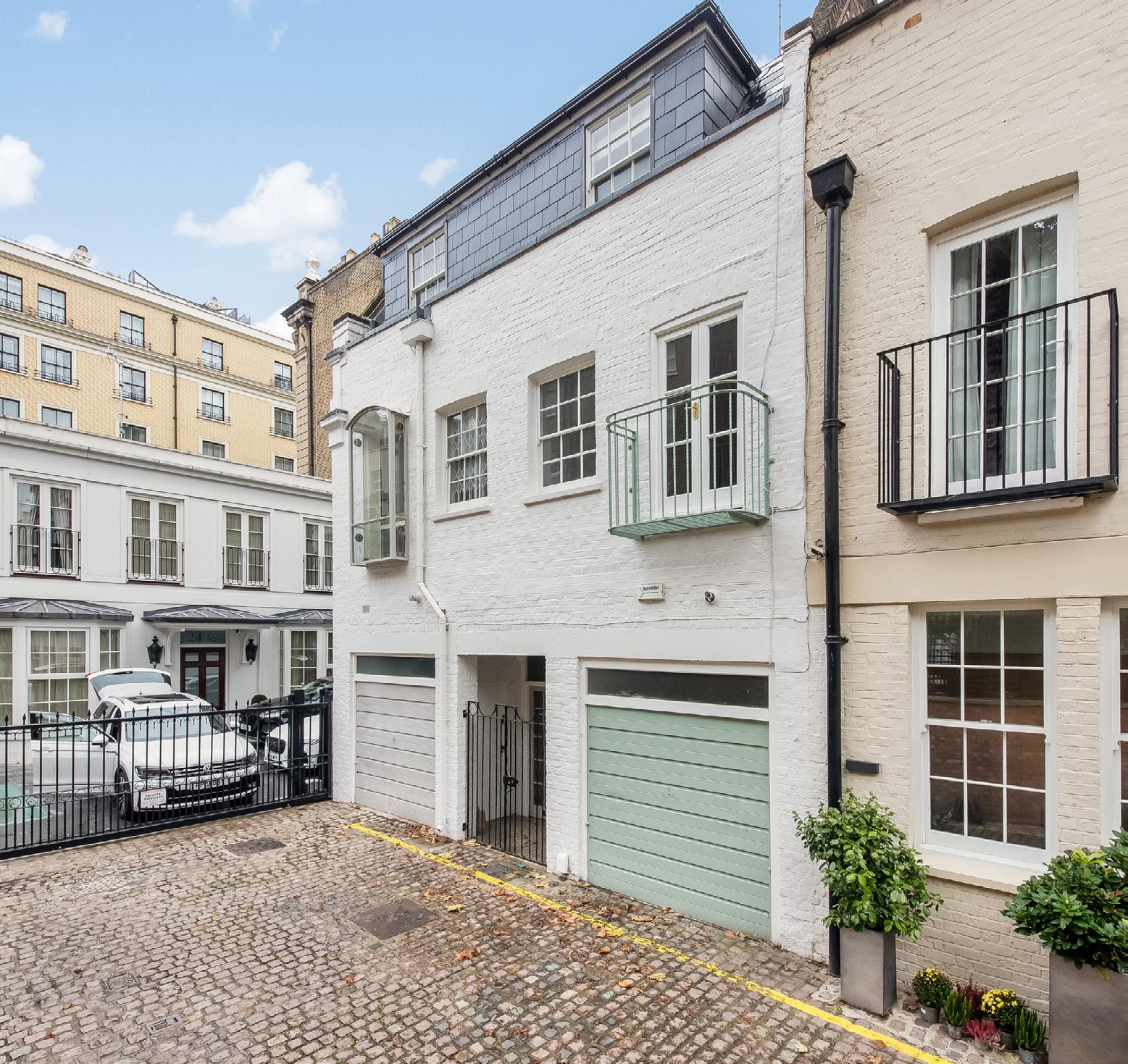



TO LET SW7 QUEENS GATE MEWS £750 pw
2 Bedrooms
1 Reception Room
2 Bathrooms • Garage • 859 sq.ft.
Long Let
•
•
•
•


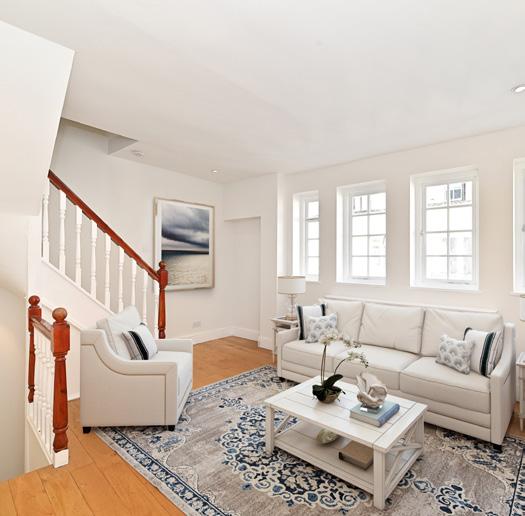

TO LET W2 UPBROOK MEWS £700 pw • 2 Bedrooms • 1 Reception Room • 2 Bathrooms • Balcony • 792 sq.ft. • Long Let
SW7 • £1,550 pw
PRINCES GATE MEWS
4 Bedrooms • Long Let •

W2 • £1,325 pw
LEINSTER MEWS
• 4 Bedrooms • Long Let
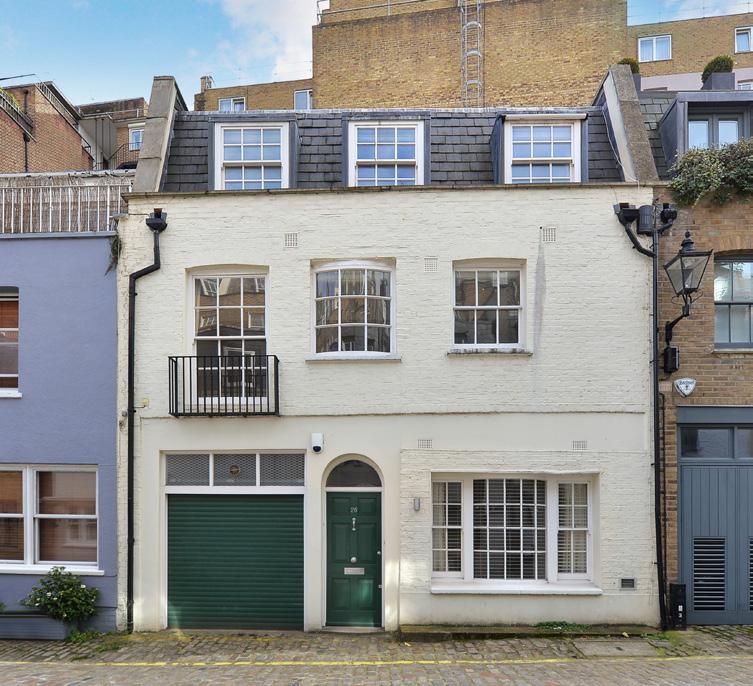
RECENTLY LET

SW5 • £1,260 pw HESPER MEWS
3 Bedrooms • Long Let •

W2 • £750 pw SHREWSBURY MEWS
• 2 Bedrooms • Long Let
And several others...
LET
THE LAST WORD IN MEWS



2024 Lurot Brand Ltd. No part of this publication may be reproduced without our consent. Produced by FOURLY. Lurot Brand (2) Limited T/A Lurot Brand | Registered in England No. 02035540 Registered Office: 37-41 Sussex Place, London W2 2TH, United Kingdom | VAT no. 629 099 505 | T: 020 7479 1999 37-41 Sussex Place, Hyde Park, London W2 2TH 4-5 Kynance Place, South Kensington, London SW7 4QS 020 7590 9955 WWW.LUROTBRAND.CO.UK





































































































































































